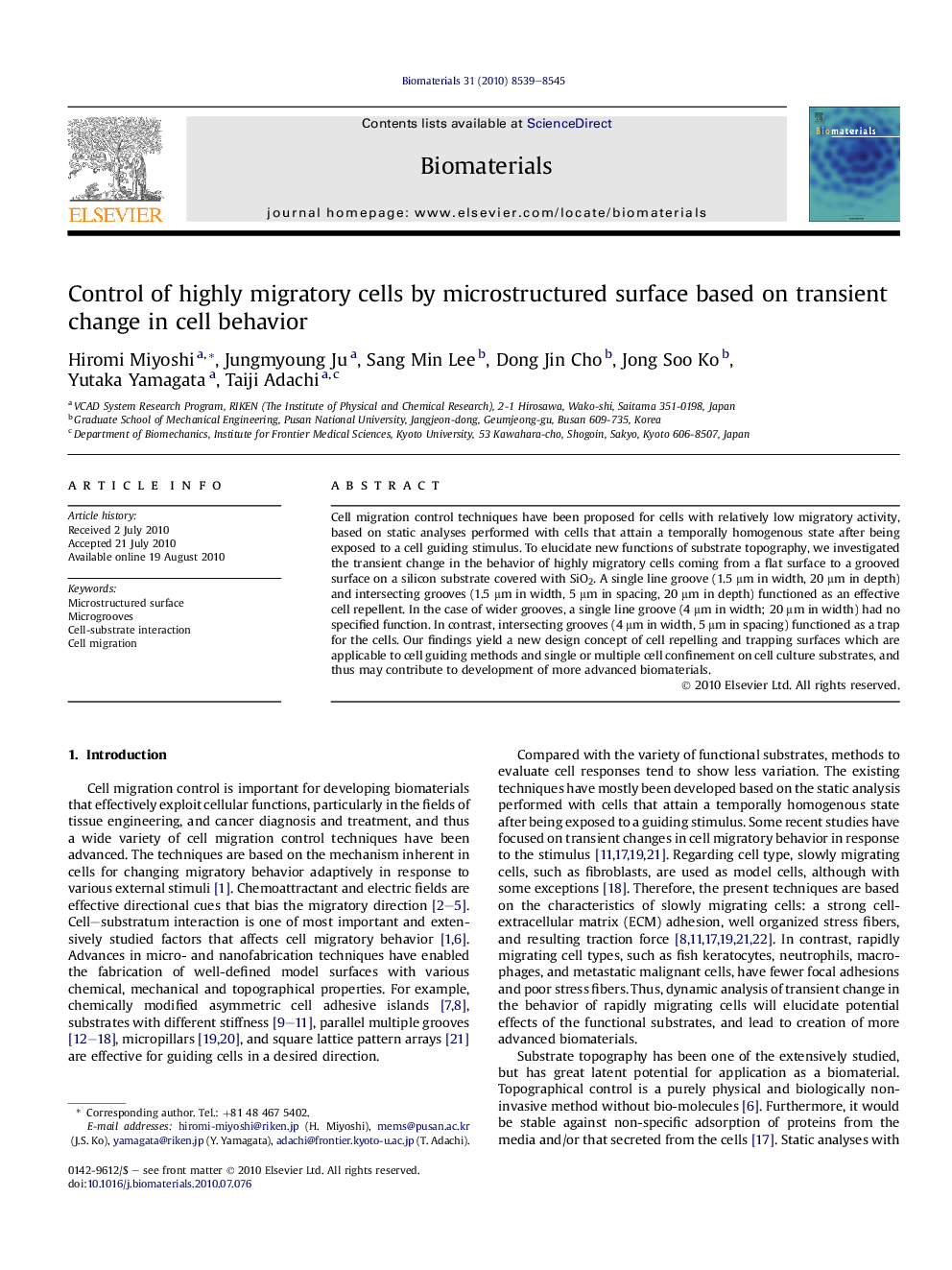| Article ID | Journal | Published Year | Pages | File Type |
|---|---|---|---|---|
| 8837 | Biomaterials | 2010 | 7 Pages |
Cell migration control techniques have been proposed for cells with relatively low migratory activity, based on static analyses performed with cells that attain a temporally homogenous state after being exposed to a cell guiding stimulus. To elucidate new functions of substrate topography, we investigated the transient change in the behavior of highly migratory cells coming from a flat surface to a grooved surface on a silicon substrate covered with SiO2. A single line groove (1.5 μm in width, 20 μm in depth) and intersecting grooves (1.5 μm in width, 5 μm in spacing, 20 μm in depth) functioned as an effective cell repellent. In the case of wider grooves, a single line groove (4 μm in width; 20 μm in width) had no specified function. In contrast, intersecting grooves (4 μm in width, 5 μm in spacing) functioned as a trap for the cells. Our findings yield a new design concept of cell repelling and trapping surfaces which are applicable to cell guiding methods and single or multiple cell confinement on cell culture substrates, and thus may contribute to development of more advanced biomaterials.
